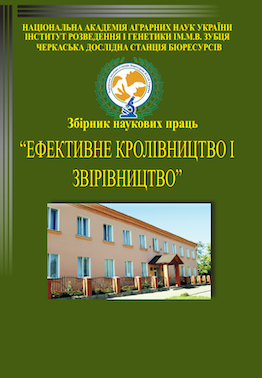ФОЛІКУЛОГЕНЕЗ В ЯЄЧНИКАХ ЄНОТОВИДНІ СОБАКИ В УМОВАХ РАДІАЦІЙНОГО ВПЛИВУ
DOI:
https://doi.org/10.37617/2708-0617.2020.6.175-189Анотація
Метою досліджень було визначення морфологічних змін яєчників у єнотовидних собак у віковому аспекті і в залежності від місця існування (з різною щільністю радіоактивного забруднення території та обліком зняття антропогенного навантаження). Наукових робіт, присвячених вивченню морфології яєчників у єнотовидних собак в зоні відчуження (30 км зона від Чорнобильської АЕС), в світі вченими не проводилося. Тому наші оригінальні дослідження є актуальними для поняття морфогенезу статевого апарату у ссавців в зоні зняття антропогенного
навантаження і при дії на організм радіоактивного забруднення. В результаті проведених досліджень встановлено, що в яєчниках самок єнотовидних собак, що мешкають на менш забрудненій радіонуклідами території, відзначено зменшення частки коркового речовини, в якому виявлено знижений вміст фолікулів, пов'язане з підвищеною загибеллю розвиваються фолікулів на різних етапах їх розвитку. У єнотовидних собак, що мешкають в ареалі з підвищеним вмістом радіонуклідів, відзначається збільшення частки коркового речовини і незначний вміст атретіческіх фолікулів (зі слабо вираженою дегенерацією фолікулярного епітелію і текальнимі клітин) в яєчниках, що свідчить про більш низькому виснаженні репродуктивного потенціалу самок в популяціях тварин, що мешкають в зоні відчуження. Дані морфофункціональні зміни можуть бути однією з головних причин підвищення чисельності єнотовидного собаки на спостережуваної території. Вікове дослідження гістології яєчників єнотовидних собак показало, що ці органи диференційовані на коркова і мозкова речовини, де спостерігається інтенсивний фолікулогенез з наявністю процесу атрезії. У зоні підвищеного радіаційного впливу атрезія фолікулів в яєчниках єнотовидних собак знижується, однак у віковому аспекті - навпаки: процес посилюється, причому більш стійкими до дегенеративних змін були покояться фолікули. Підвищена елімінація генеративних структур яєчників може розглядатися двояко: і як результат деструктивних впливів на репродуктивну функцію, і, в той же час, як результат адаптивних можливостей популяції (елімінація генетично дефектних
статевих клітин, спрямована на захист генофонду популяції).


